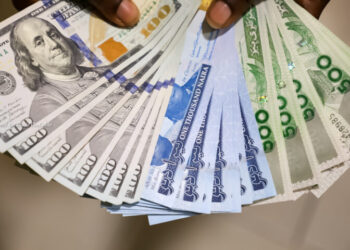Africa, the world’s second-largest continent, is home to a diverse array of economies and currencies. As we delve into the economic landscape of this vast and vibrant continent, we take a closer look at some of Africa’s most valuable currencies, reflecting the strength and stability of their respective nations.
1. Libyan Dinar (LYD) – Leading the Pack:
Topping the list is the Libyan Dinar (LYD). Libya’s oil-rich economy has helped bolster its currency’s value. The stability of the Libyan Dinar can be attributed to the nation’s oil exports, which remain a primary source of revenue. Although the country has faced internal challenges in recent years, its currency has maintained its value, making it one of the strongest in Africa.
2. Tunisian Dinar (TND) – A Stable Performer:
The Tunisian Dinar (TND) has shown resilience in the face of economic challenges. Tunisia’s diverse economy, which includes agriculture, manufacturing, and tourism, has contributed to the strength of its currency. Despite political and social changes, the Tunisian Dinar remains a stable currency in the region.
3. Moroccan Dirham (MAD) – North African Economic Hub:
Morocco’s Dirham (MAD) is another notable currency in Africa. The country’s diversified economy, which includes agriculture, mining, and manufacturing, has helped maintain the Dirham’s value. Furthermore, Morocco’s strategic location as a gateway between Europe and Africa has facilitated trade and investments, supporting the currency’s strength.
4. Botswana Pula (BWP) – A Model of Stability:
Botswana’s Pula (BWP) is often regarded as one of the most stable currencies on the continent. The nation’s sound economic policies, political stability, and robust diamond mining industry have all contributed to the strength of the Pula.
5. South African Rand (ZAR) – The Continent’s Economic Powerhouse:
As Africa’s most industrialized and diverse economy, South Africa boasts the South African Rand (ZAR) as its currency. The Rand plays a pivotal role in the African economy and is one of the most widely traded currencies on the continent. Although it has faced some volatility in recent years, South Africa’s economic might and global trade connections keep the Rand a significant player.
6. Egyptian Pound (EGP) – Stability Amid Challenges:
Egypt’s currency, the Egyptian Pound (EGP), is another strong contender in the African currency landscape. Egypt’s diverse economy, which includes agriculture, manufacturing, and tourism, provides resilience against economic fluctuations. Despite political changes and social upheaval, the Egyptian Pound has maintained its value.
7. Ghanaian Cedi (GHS) – A Growing Force:
Ghana, with its flourishing cocoa and gold industries, is making its mark on the continent’s economic scene. The Ghanaian Cedi (GHS) has gained value over the years due to the country’s expanding economy and prudent fiscal policies.
8. Kenyan Shilling (KES) – East Africa’s Economic Hub:
Kenya, often considered East Africa’s economic powerhouse, uses the Kenyan Shilling (KES) as its currency. With a diverse economy that encompasses agriculture, manufacturing, and technology, the Kenyan Shilling reflects the country’s dynamic economic growth.
It’s important to note that currency values can fluctuate due to various factors, including economic performance, political stability, global market conditions, and external influences. While these currencies are considered some of Africa’s most valuable, the economic landscape is constantly evolving.











